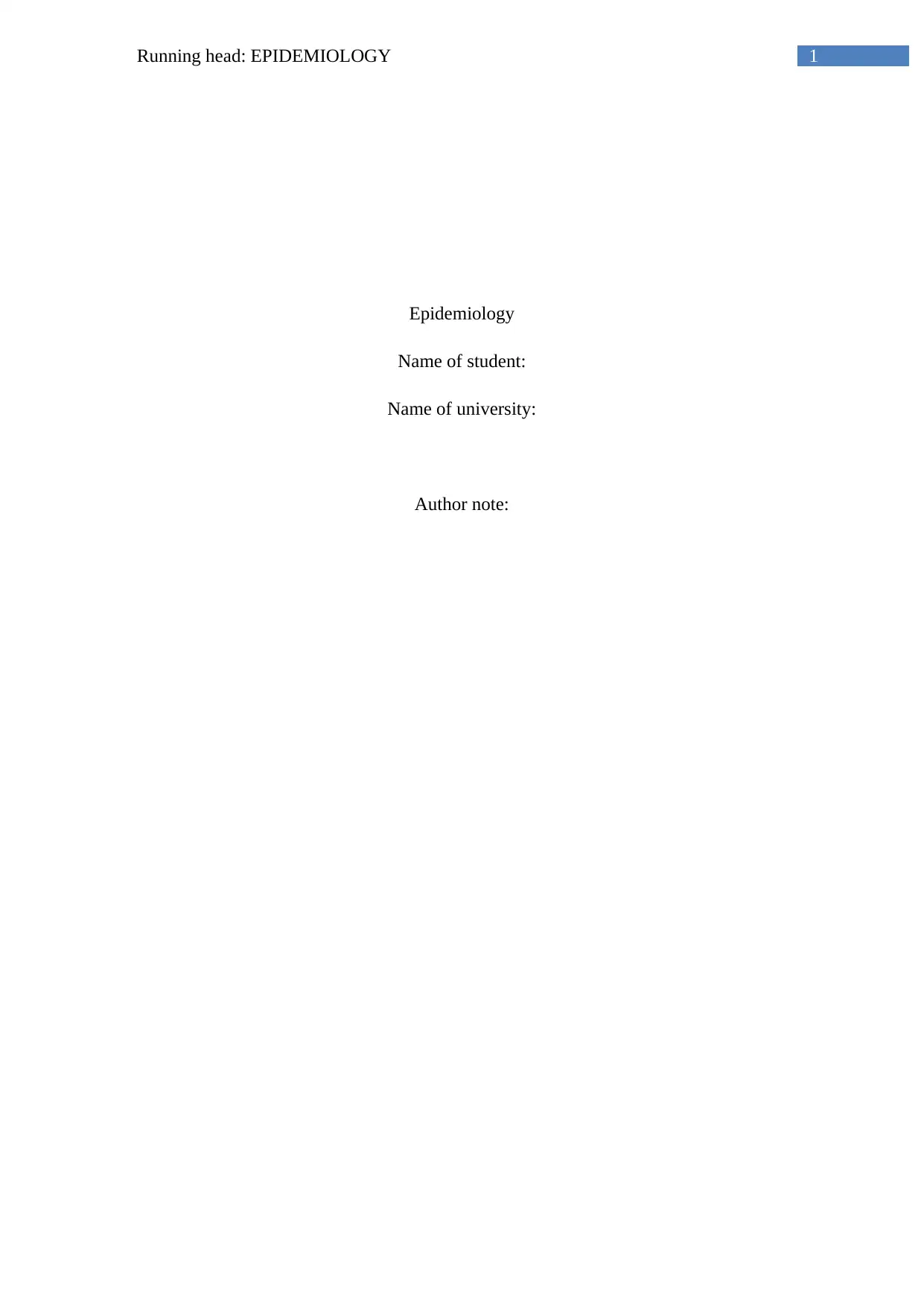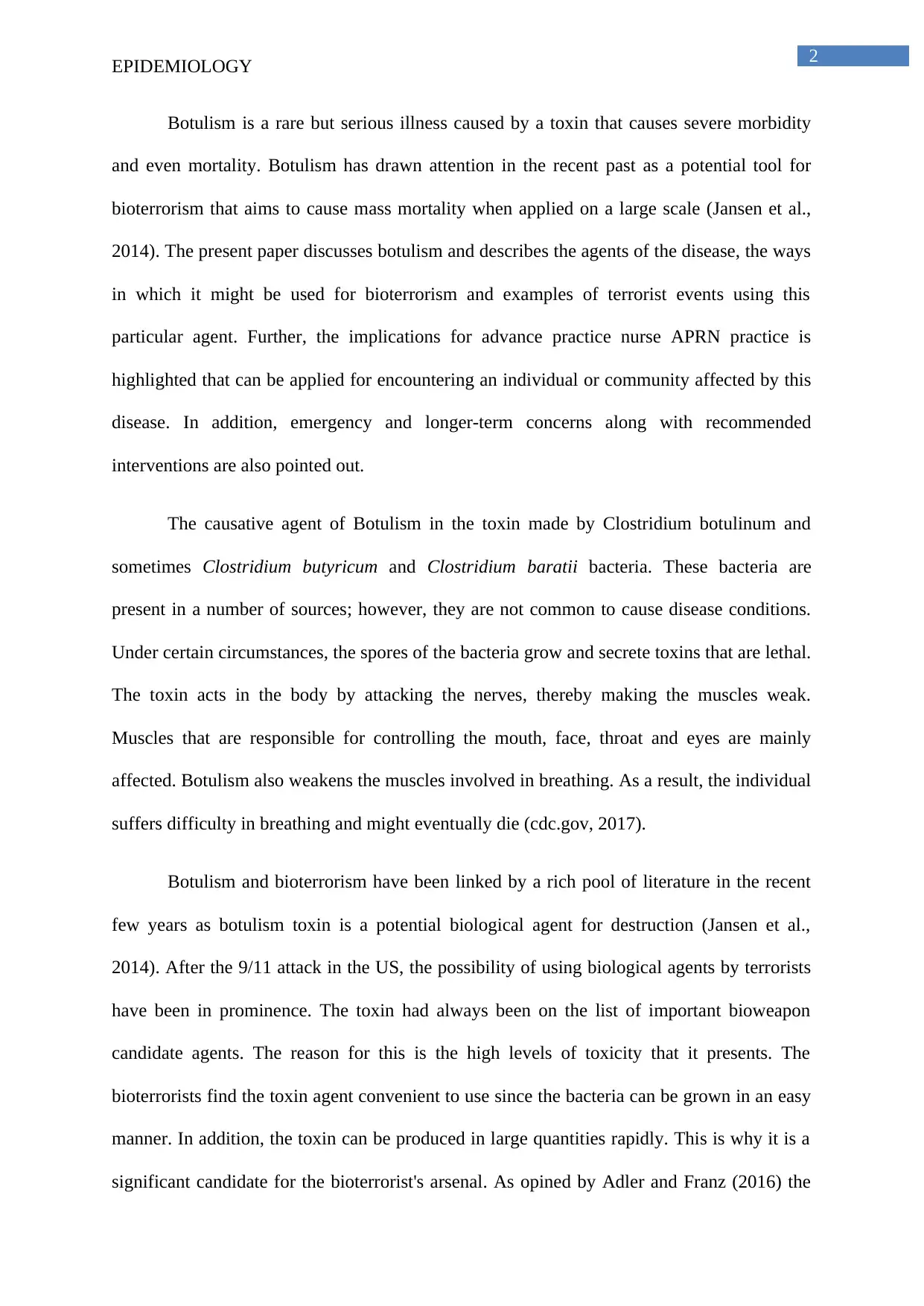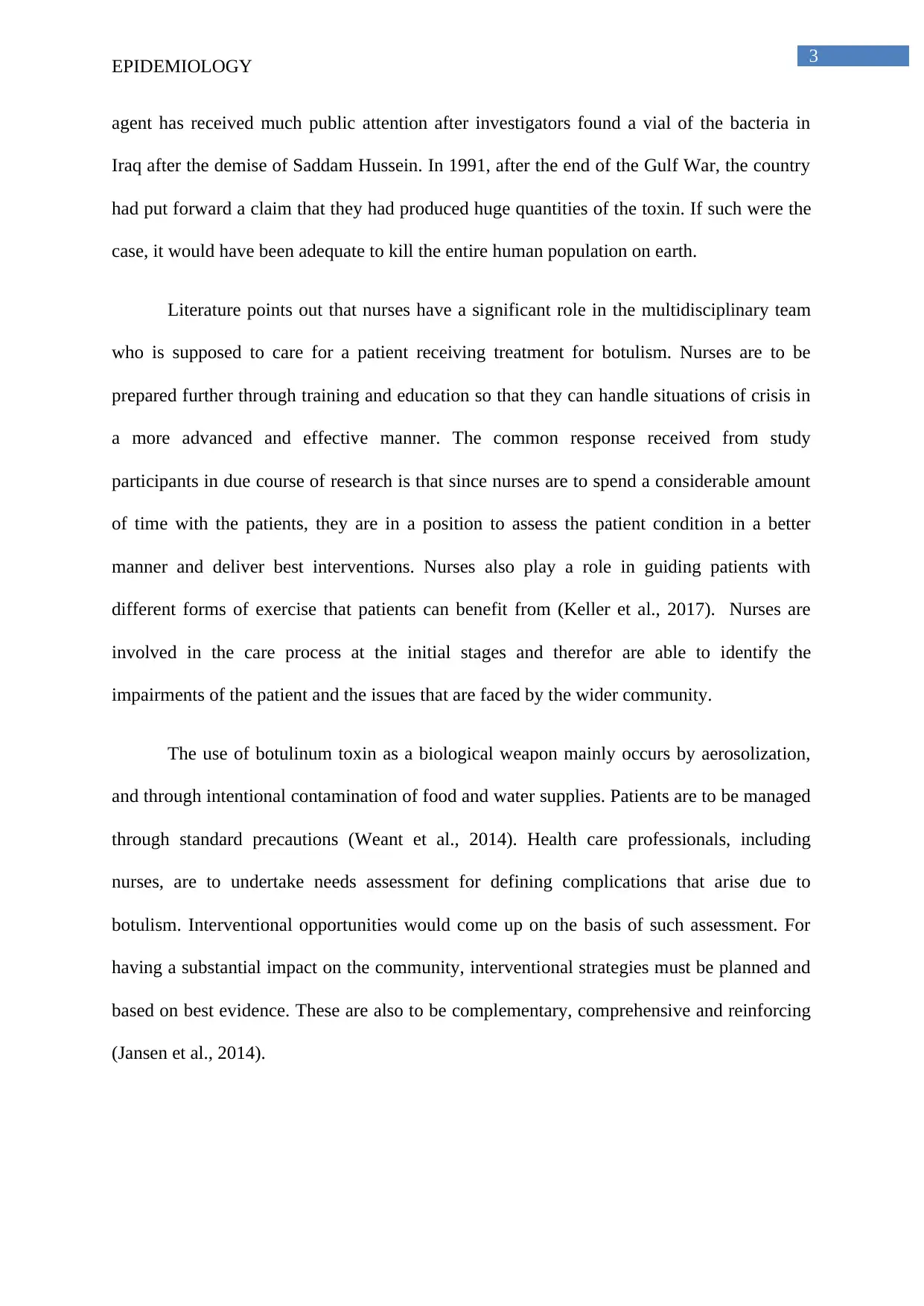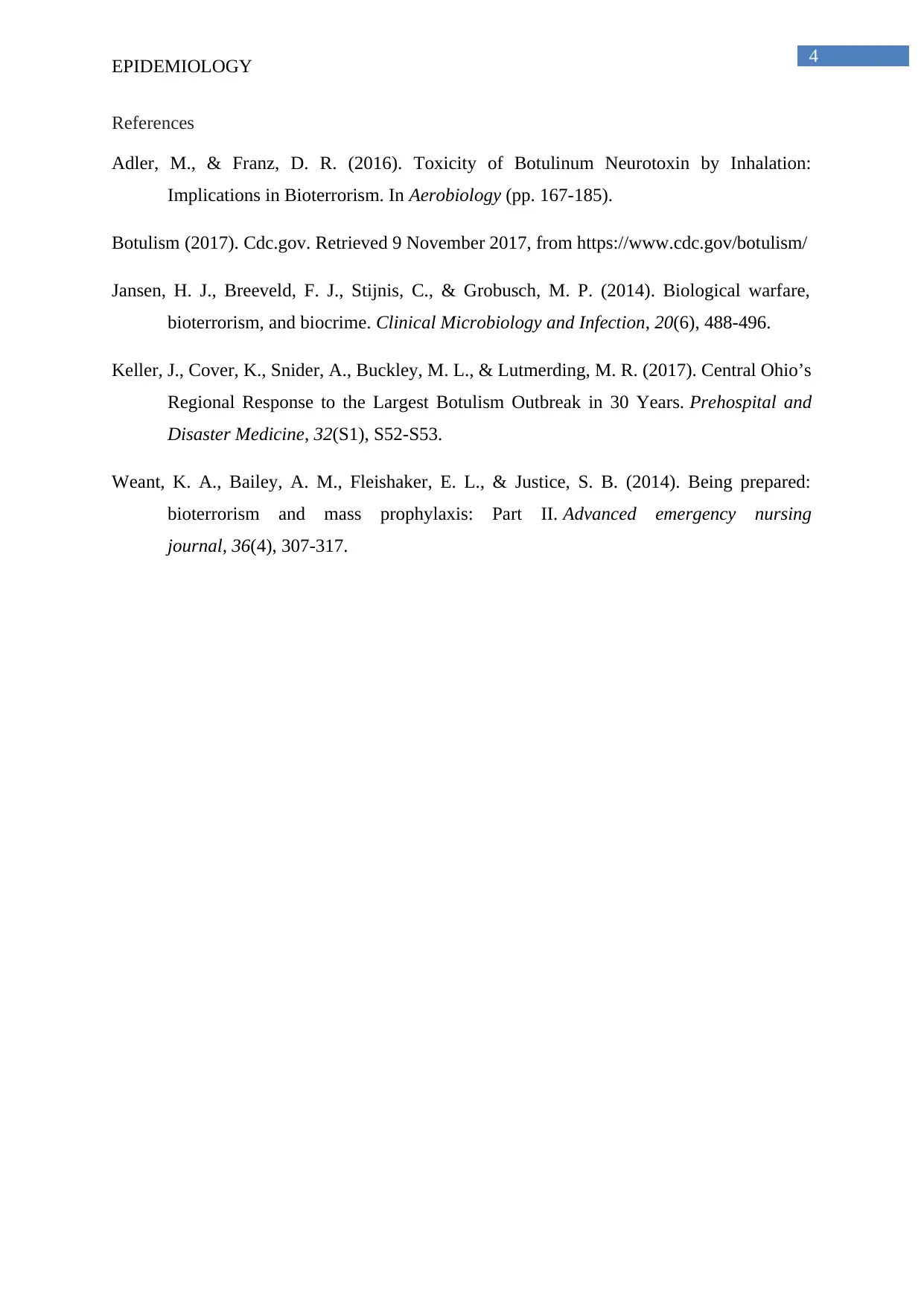Botulism and Bioterrorism: APRN Practice and Intervention Strategies
VerifiedAdded on 2020/04/21
|4
|944
|115
Report
AI Summary
This report delves into the public health threat of botulism, examining the causative agents like Clostridium botulinum and its potential use as a bioterrorism agent. It discusses the high toxicity of the botulism toxin, its ease of production, and historical instances of concern. The report highlights the critical role of nurses and other healthcare professionals in the multidisciplinary team, emphasizing the need for training and education to handle crisis situations. It outlines the importance of early assessment, intervention strategies, and the application of standard precautions. Furthermore, it explores the implications for Advanced Practice Registered Nurses (APRNs), including their roles in patient assessment, intervention, and community impact, while also addressing emergency and long-term concerns. The report references various sources to support the claims made and emphasize the importance of preparedness in the face of this significant public health concern.
1 out of 4






![[object Object]](/_next/static/media/star-bottom.7253800d.svg)